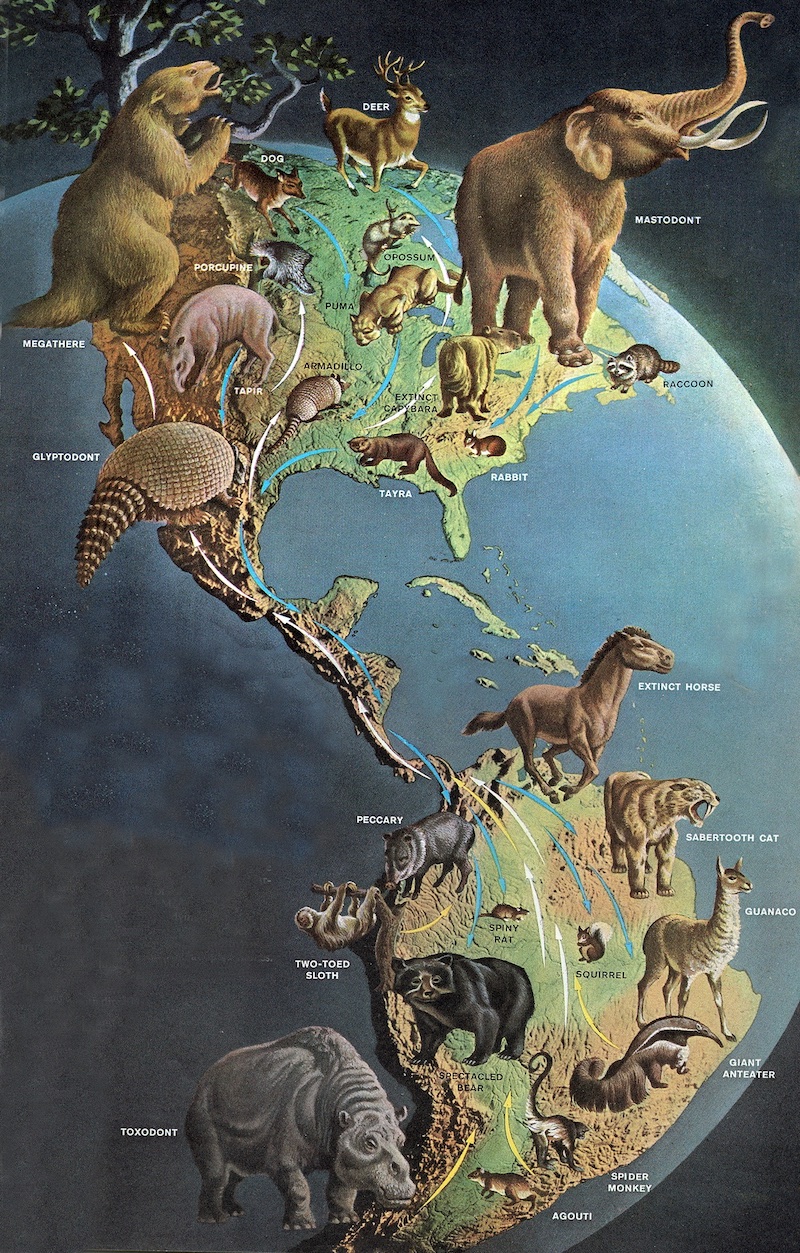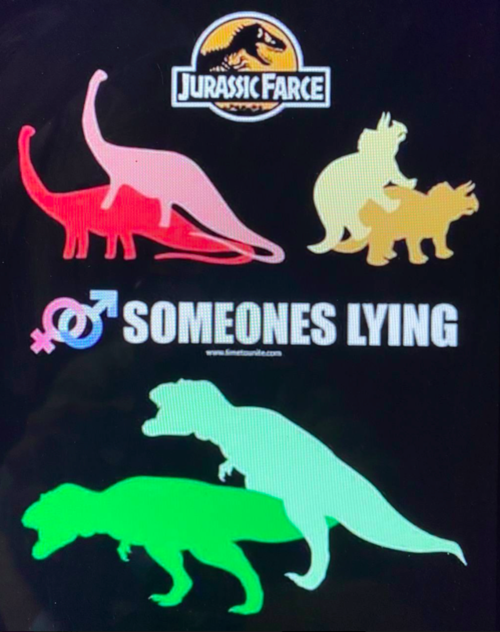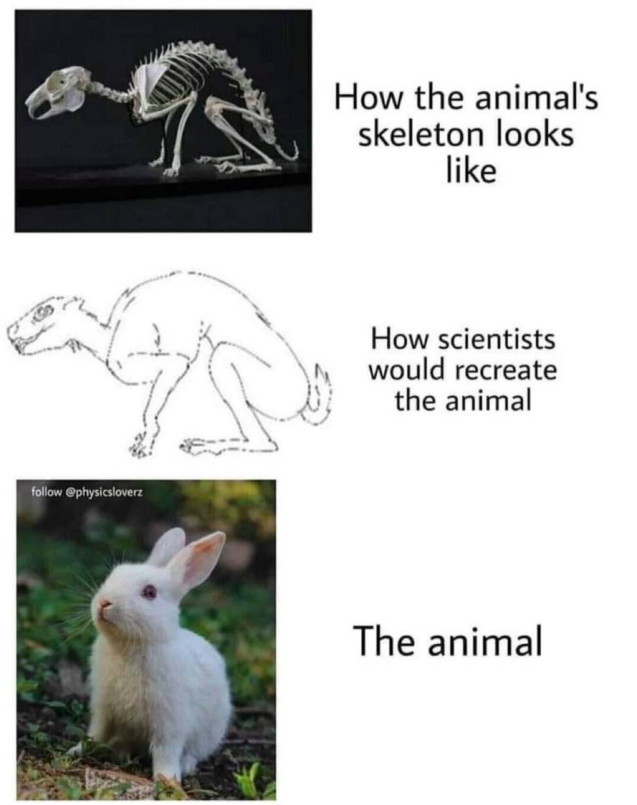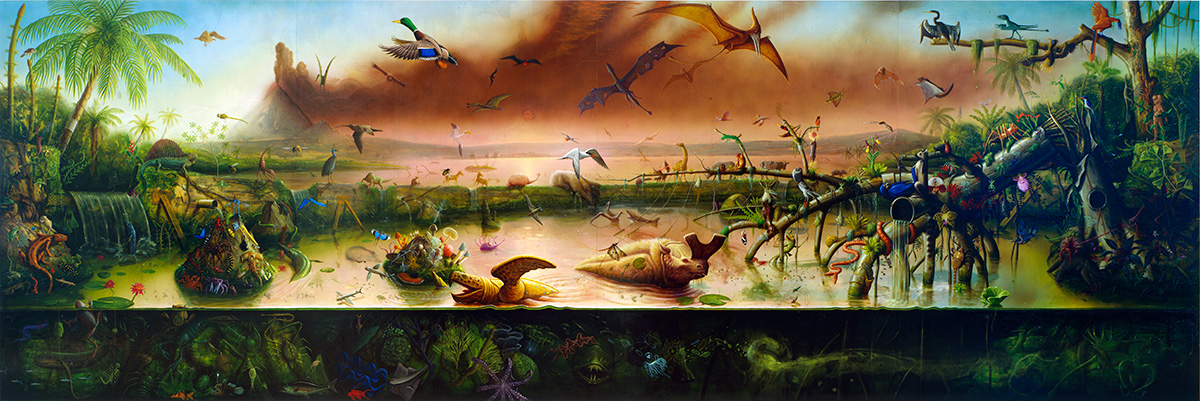Colonia del Sacramento, Geologic Time Scales, and Dinosaur Memes
 Monday, November 1, 2021 at 03:17PM
Monday, November 1, 2021 at 03:17PM Colonia del Sacramento is a town (27,000 residents) on the banks of the Rio de la Plata, the vast estuary that lies between Argentina and Uruguay. The expansive waters of the estuary stretch from Montevideo to Buenos Aires and are home to river dolphins, piranhas, sea monkeys, and the golden dong. The estuary is fed by the Uruguay and Parana Rivers, and the waters are muddy, silty, and sediment rich. The Parana River is the second-longest in South America, and the Rio de la Plata is the sixth-largest river drainage basin in the world (after the Amazon, Congo, Nile, Ob, Mississippi, and Yer Mamma). Colonia del Sacramento juts out into the estuary and the old town is surrounded by water.

Rio de la Plata from above, image from Wikipedia.
Colonia was originally a Portuguese fortress established in 1680. Portuguese and Spanish colonialists arrived in Uruguay in the early 1500s, and Colonia was a flashpoint between the two empirical powers for a century. After massacring the indigenous population (following the Charrua genocide in 1831, Uruguay’s native population had been eradicated entirely), and declaring independence from their metropoles on the Iberian Peninsula, the newly independent nations of Uruguay, Paraguay, Argentina, and Brazil proceeded to massacre each other in the Uruguayan and Paraguayan wars. Within the borders of these nations, inhabitants massacred their fellow countrymen in various civil conflicts that stretched beyond the years of the external wars. The Paraguayan War (or War of the Triple Alliance: Paraguay vs. Uruguay, Argentina, and Brazil) took place between 1864 – 1870, and claimed upwards of 400,000 to 450,000 lives, three-fourths of them Paraguayans (roughly 60% of the country’s population at the time). For comparison, the U.S. Civil War was fought between 1861 – 1865 and resulted in the deaths of an estimated 750,000 Americans – approximately 2.5% of the U.S. population at the time.* Nowadays, national disputes in South America are not unfolding violently on the battlefield so much as they are expressed in competitive football matches. This sense of national pride is similar across the globe as citizens watch their teams compete in qualifying matches for next year’s World Cup, which is the closest alternative to global kinetic warfare that humanity has ever seen. Even elements of artificial intelligence will one day be incorporated into tournaments, as robots are expected to compete against the human champions of the 2050 World Cup.
Colonia’s historic old town is small and labyrinthine. Some cobblestone streets are lined by abandoned storefronts and homes, others by sleepy cafes, shops, art galleries, and little museums. The buildings are mostly diminutive, which adds to the dwarfish nature of the town. One gets the sense they are walking through a diorama, Hollywood set, or Potemkin village where facades have been laid the on old stone walls of colonial structures containing vine-covered courtyards enveloped by trees. (A charming part of Uruguay is the abundance of trees on the sidewalks that provide shade for the pedestrians and shelter the many birds chirping from sunrise to sunset.) The fortress is made of giant blocks of black granite thick enough to withstand cannon fire. A substantial amount of earth-moving was required to dig up those rocks, which could explain all the fossils of extinct Pleistocene animals in the museums. On display in the museums are fossils of giant sloths, glyptodons, toxodons, saber-tooth tigers, mastodons, and extinct llamas, horses, bears, wolves, and terror birds. Beginning three million years ago the Isthmus of Panama steadily surfaced from the sea, creating a land bridge linking North America and South America across which prehistoric fauna and ancient dinosaur warriors trekked in an event known as the Great American Biotic Interchange.
 Image from The Rafting Monkey.
Image from The Rafting Monkey.
I’ve always been impressed by the Geologic Time Scale (GTS) and I keep a printed copy in my notepad. On occasion I pull out the GTS and try to memorize the eras, epochs, and ages of the eons. By familiarizing myself with the GTS, I was able to better contextualize the length of time required for certain changes to occur over time, better appreciate my infinitesimal status when compared to the grander scheme of things, as well as to be grateful for existing in a relatively stable point in history. (Carl Sagan would often touch on these concepts in Cosmos, which is one reason why I would listen to that series repeatedly.) Even as I attempted to grapple with the understanding of deep time (concepts illustrated by such timescale facts as Tyrannosaurs Rex lived closer to humans than it to Stegosaurus, or that Cleopatra lived closer to the moon landing than she did to the construction of the Great Pyramids, or that Oxford University was established before rise of the Aztecs Empire), it felt like I was leaving out another massive aspect of life on Earth. Although I was gaining an appreciation for timescales, I still fail to understand the volume and diversity of what was unfolding. I realized that I needed enhance my understanding of biological diversity, specifically the types and numbers of species on Earth, how they’re classified, as well as their evolutionary relationships. So on the other side of the GTS print-out that I carry are diagrams related to taxonomy (classification of species) and phylogeny (evolutionary relationships). It’s always been my dream to draw my own geological time scale and evolutionary tree of life. In the meantime, I’ll try to expand my knowledge of these subjects through reading and taking notes on Eons videos.
To end, last week I was lying in bed and my religious friend texted me this meme and said, “Explain this.”

This was how the exchange went.
Aaron: I’m not sure what that meme is implying…
Friend: It’s asking how dinosaurs were able to mate when the tail prevents their genitalia from connecting.
Aaron: Probably by moving their tails out of the way.
Because I had recently seen a meme that was a slightly related to his point, I forwarded it to him:

I laid in bed thinking about the meme my friend had sent me and the reasoning he used to presumably arrive at the conclusion that dinosaurs might be fictitious due to the inability to conceive how they mated because their tails got in the way. I wondered what type of thought process was at play that leads one to question the existence of dinosaurs based off of a meme depicting their bulky rear ends obstructing fornication. I thought to myself: if I wanted to make a case against the existence of dinosaurs, I wouldn’t begin by arguing that they never existed because it would have been physically impossible for them to hump. That requires a big lack of imagination in that dinosaurs should be given the benefit of the doubt when it comes to creative mating. But it also required a huge imagination on his part to suggest that somehow the official paleontological narrative was being manipulated or misconstrued because it is incompatible with Creationism. The other thought that was simultaneously running through my mind is why not simply look to the animals alive today that face mating challenges similar to the clumsy dinosaurs depicted in the meme: crocodiles, komodo dragons, tortoises, sea turtles, elephants, giraffes, hippos, rhinos, ostriches, the morbidly obese, etc.
 Alexis Rockman, Evolution
Alexis Rockman, Evolution
*I am currently reading Anabasis, aka The March Up Country or The March of the 10,000 by Xenophon. This book was written over 2,500 years ago and is a first-hand account of the march of thousands of Greek mercenaries from Persia through Mesopotamia to Greece. The plight takes place after a series of battles were lost by the rebellious Persian commander Cyrus the Younger. As I read about battle after battle, and campaign after campaign involving tens of thousands, in some cases hundreds of thousands of men, it’s becoming clearer to me that I have lowballed the extent to which human history is riddled with conflict. Growing up in a relatively peaceful time and place, one can easily fail to appreciate that war and violence was the norm.
 Aaron |
Aaron |  Post a Comment |
Post a Comment | 
Reader Comments